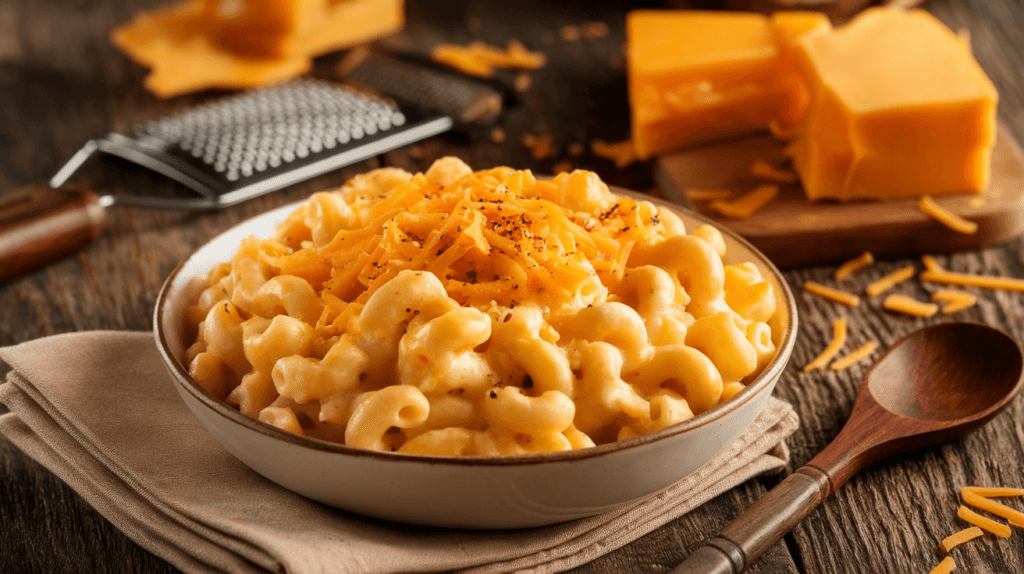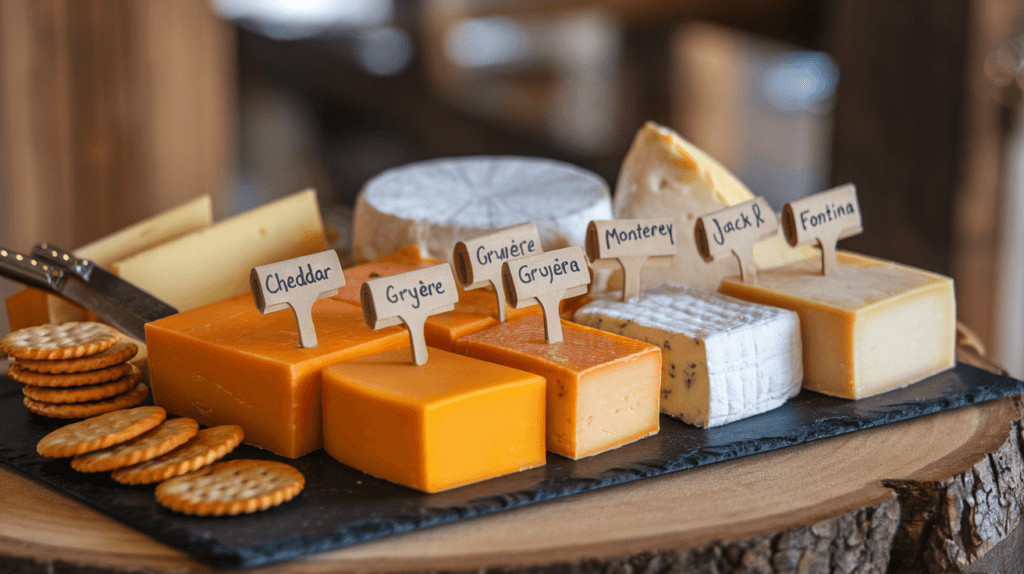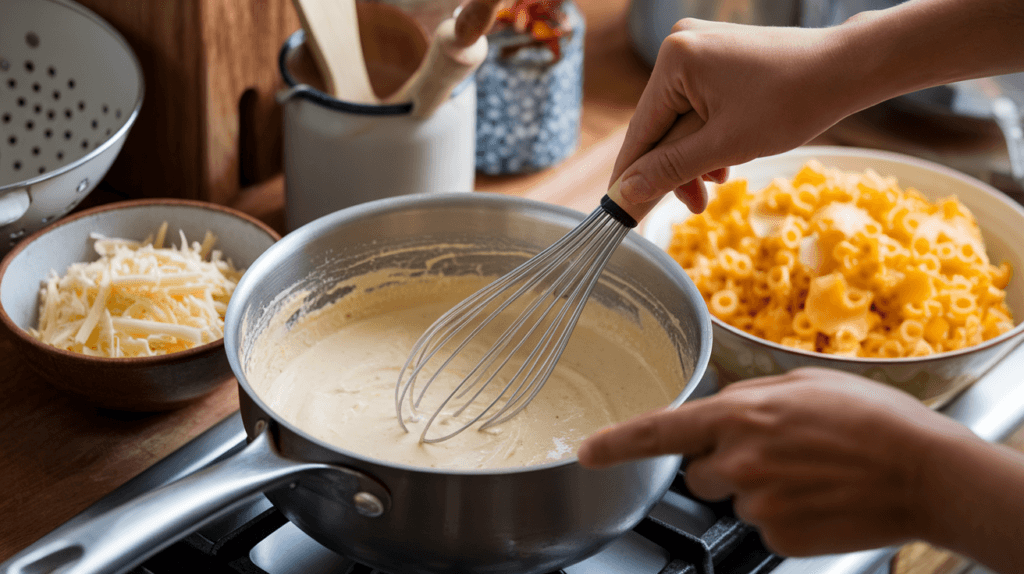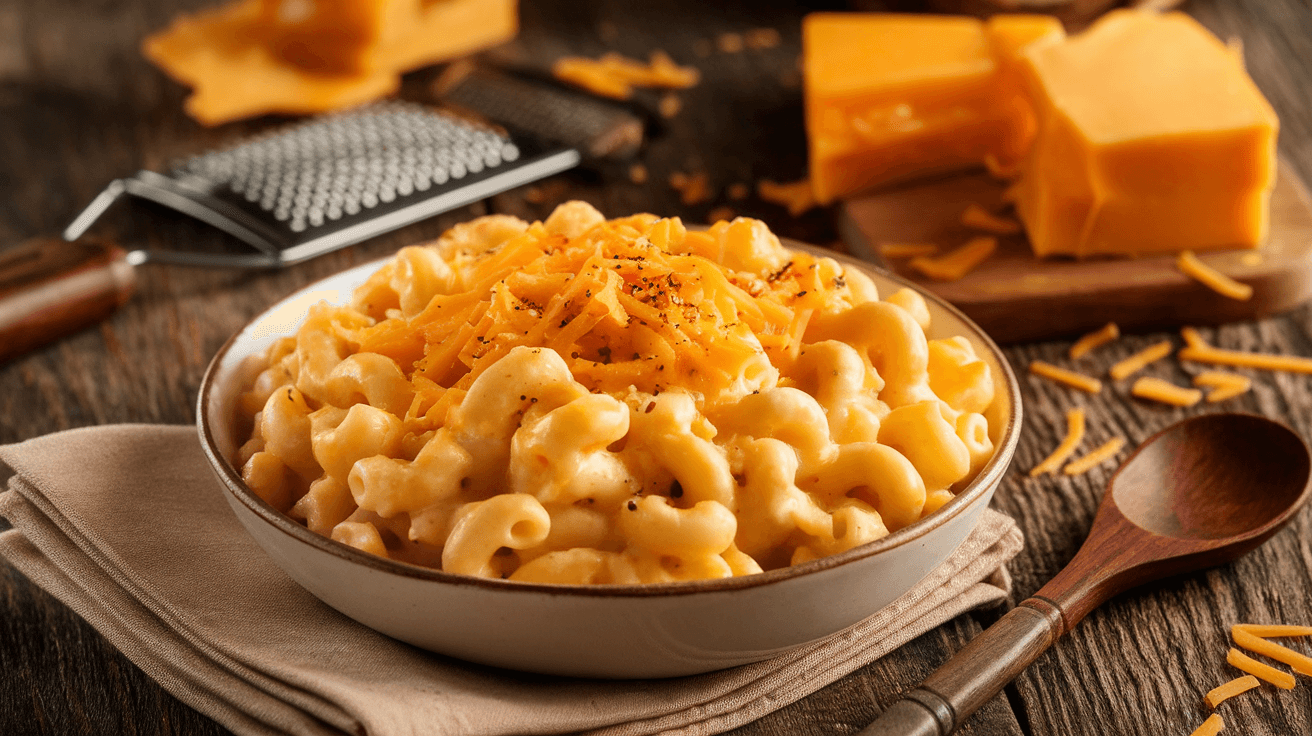Introduction
Mac and cheese is a timeless comfort food, loved for its creamy, cheesy goodness. But not all cheeses are created equal when it comes to achieving that perfect melt. Some cheeses provide a silky, smooth texture, while others can leave your dish stringy or clumpy. So, what is the best melting cheese for mac and cheese? This guide dives deep into the top cheese options and tips to elevate your mac and cheese game.

Why Cheese Matters in Mac and Cheese
The Role of Cheese in Texture and Flavor
Cheese is the star ingredient of mac and cheese, determining both its flavor profile and texture. A good melting cheese can create a velvety sauce that coats every noodle, while also offering a balanced, rich taste. The wrong cheese, however, might not melt evenly, leaving lumps or a greasy residue in your dish.
What Makes a Cheese Ideal for Melting?
The best cheeses for melting have high moisture content and a smooth, creamy texture. They typically fall into the category of young cheeses or semi-hard varieties, which melt uniformly without breaking or curdling. Cheeses like cheddar, Gruyère, and Monterey Jack are known for their meltability, making them ideal choices for mac and cheese.
Top Melting Cheeses for Mac and Cheese

Cheddar Cheese: The Classic Choice
When it comes to mac and cheese, cheddar is a classic and beloved option. Its rich, sharp flavor and excellent melting properties make it a go-to choice for many recipes. Cheddar melts smoothly without becoming oily or stringy, creating a creamy sauce that clings perfectly to pasta. Opt for medium or sharp cheddar for the best results, as these varieties strike a balance between flavor and meltability.
Gruyère: The Gourmet Touch
If you’re looking to add a touch of sophistication to your mac and cheese, Gruyère is an excellent choice. This Swiss cheese is known for its nutty, slightly sweet flavor and impeccable melting characteristics. Gruyère melts evenly, creating a silky texture that pairs beautifully with other cheeses. It’s particularly well-suited for baked mac and cheese recipes, where its golden-brown crust and creamy interior shine.
Monterey Jack: Smooth and Creamy
Monterey Jack is a mild, semi-hard cheese that melts like a dream. Its buttery, slightly tangy flavor complements other cheeses, making it a versatile option for blending. Monterey Jack is particularly popular in mac and cheese recipes that aim for a smooth, creamy consistency without overpowering flavors. For added flair, try pepper jack, a spicier variant infused with jalapeños and other peppers.
Fontina: Mild and Velvety
Fontina is another excellent melting cheese, prized for its mild, nutty flavor and velvety texture. Originating from Italy, Fontina is often used in creamy dishes and fondue, making it a natural fit for mac and cheese. Its subtle taste pairs well with stronger cheeses like Parmesan or Gruyère, allowing you to create a balanced and flavorful cheese sauce.
Blending Cheeses for the Perfect Dish

Best Cheese Combinations for Flavor and Texture
One of the secrets to a truly outstanding mac and cheese is blending different cheeses. Using a mix of cheeses allows you to combine their strengths—whether it’s the sharpness of cheddar, the creaminess of Monterey Jack, or the nutty undertones of Gruyère. Here are some tried-and-true combinations for a delicious and well-balanced mac and cheese:
- Cheddar and Gruyère: A classic pairing that combines the sharp, tangy flavor of cheddar with the smooth, nutty melt of Gruyère.
- Monterey Jack and Parmesan: Monterey Jack provides creaminess, while Parmesan adds a savory, umami punch.
- Fontina and Mozzarella: These mild, melty cheeses work together to create an ultra-creamy sauce with a gooey stretch.
- Brie and Cheddar: Brie’s rich, buttery texture balances the sharpness of cheddar for a luxurious dish.
Experimenting with different blends can help you find the perfect flavor profile to suit your taste.
Tips for Mixing Cheeses Like a Pro
Blending cheeses can elevate your mac and cheese, but it requires some finesse to get it just right. Follow these tips to create the perfect cheese blend:
- Balance bold and mild flavors: Pair a sharp or tangy cheese with a milder option to avoid overwhelming your palate.
- Consider meltability: Always include at least one cheese known for its melting properties, such as cheddar or Monterey Jack.
- Grate your cheese: Freshly grated cheese melts more evenly than pre-shredded varieties, which often contain anti-caking agents.
- Test small batches: If you’re experimenting with new combinations, try melting small amounts together to see how they blend.
- Don’t overcomplicate it: Stick to two or three complementary cheeses to maintain a cohesive flavor profile.
With the right combinations and techniques, you can craft a cheese sauce that’s both rich and perfectly creamy, ensuring your mac and cheese is a crowd-pleaser every time.
How to Melt Cheese for Mac and Cheese
Step-by-Step Guide to Melting Cheese
Melting cheese for mac and cheese may seem straightforward, but achieving a smooth, creamy sauce requires the right techniques. Here’s a step-by-step guide to help you create the perfect cheese sauce:
- Start with a roux: Melt butter in a saucepan over medium heat, then whisk in an equal amount of flour. Cook for 1–2 minutes to eliminate the raw flour taste.
- Add milk gradually: Slowly pour in warm milk, whisking constantly to avoid lumps. Heat the mixture until it thickens into a béchamel sauce.
- Lower the heat: Once your béchamel is ready, reduce the heat to low. High heat can cause cheese to separate or become gritty.
- Add cheese gradually: Slowly stir in small amounts of grated cheese, allowing each addition to melt completely before adding more.
- Stir continuously: Use a wooden spoon or silicone spatula to stir gently, ensuring the cheese melts evenly into the sauce.
- Season to taste: Add salt, pepper, and other seasonings like paprika or mustard powder to enhance the flavor of your cheese sauce.
By following these steps, you can create a silky, rich cheese sauce that perfectly coats your pasta.
Avoiding Common Melting Mistakes
Even experienced cooks can encounter issues when melting cheese. Here are some common mistakes to avoid:
- Using pre-shredded cheese: Pre-shredded cheese contains anti-caking agents that can prevent smooth melting. Always opt for freshly grated cheese.
- Overheating the cheese: High temperatures can cause cheese to break down, resulting in a greasy or grainy texture. Keep the heat low and steady.
- Adding cheese too quickly: Dumping all the cheese in at once can lead to clumps. Add it gradually for a smoother sauce.
- Skipping the roux: A roux helps stabilize the cheese sauce, preventing separation. Don’t skip this crucial step.
- Neglecting to stir: Constant stirring ensures the cheese melts evenly and prevents scorching at the bottom of the pan.
By avoiding these pitfalls, you can ensure your mac and cheese turns out creamy and delicious every time.
Tips for Customizing Your Mac and Cheese
Add Protein for a Heartier Meal
Transform your mac and cheese into a complete meal by adding protein-rich ingredients. Cooked chicken, crispy bacon, or sautéed shrimp can enhance the dish’s flavor and make it more filling. For a vegetarian option, try adding roasted chickpeas or plant-based protein crumbles.
Incorporate Vegetables for Added Nutrition
Balance the richness of mac and cheese by mixing in vegetables. Steamed broccoli, roasted butternut squash, or sautéed spinach are excellent options. These additions not only boost the nutritional value but also provide contrasting textures and flavors.
Experiment with Spices and Seasonings
Enhance the flavor of your mac and cheese by experimenting with spices and seasonings. A pinch of smoked paprika, ground mustard, or cayenne pepper can add depth and a subtle kick. For an earthy touch, consider fresh herbs like thyme or parsley.
Try Different Pasta Shapes
While traditional elbow macaroni is a classic choice, other pasta shapes can work just as well. Shells, cavatappi, and penne are all excellent options that hold onto the cheese sauce beautifully. Explore different shapes to find the one you love most.
Make It Crunchy with Toppings
Elevate your mac and cheese with a crunchy topping. Panko breadcrumbs, crushed crackers, or even fried onions can add a delightful texture contrast. Simply sprinkle the topping over your mac and cheese before baking for a golden, crispy finish.
Go Global with Flavors
Take inspiration from global cuisines to create unique mac and cheese variations. Add taco seasoning and jalapeños for a Tex-Mex twist, or mix in curry powder and coconut milk for an Indian-inspired version. The possibilities are endless!
Customizing your mac and cheese allows you to tailor it to your preferences and try something new every time. Don’t be afraid to get creative and explore different combinations to make this comfort food your own.
FAQs
What cheese should I avoid for mac and cheese?
Some cheeses don’t melt well and can ruin the texture of your mac and cheese. Cheeses like feta, goat cheese, and blue cheese tend to be crumbly or have a strong, pungent flavor that may overpower the dish. Similarly, aged cheeses like Parmesan or Pecorino Romano, while flavorful, don’t melt as smoothly and are better used in combination with other melting cheeses.
Can I use pre-shredded cheese?
While convenient, pre-shredded cheese is often coated with anti-caking agents like cellulose, which can affect its melting properties. This can result in a grainy or clumpy cheese sauce. For the best results, always shred your cheese fresh before adding it to your mac and cheese.
What can I do if my cheese isn’t melting properly?
If your cheese isn’t melting smoothly, there are a few things you can do:
- Lower the heat to prevent overheating, which can cause the cheese to separate.
- Add a splash of milk or cream to the sauce to help create a smoother texture.
- Whisk vigorously to break up any clumps and incorporate the cheese fully into the sauce.
Taking these steps can help rescue your cheese sauce and achieve the creamy consistency you’re aiming for.
Are vegan cheeses good for mac and cheese?
Yes, vegan cheeses have come a long way in terms of flavor and texture. Brands like Daiya, Violife, and Miyoko’s offer plant-based cheeses specifically designed to melt well. When choosing a vegan cheese, look for options labeled “melty” or “creamy” for the best results. You may also want to add nutritional yeast to enhance the cheesy flavor of your dish.
How do I achieve a creamy consistency?
To achieve a creamy consistency in your mac and cheese, follow these tips:
- Use a roux-based cheese sauce as the foundation of your dish.
- Incorporate high-moisture cheeses like Monterey Jack or Fontina for a smooth texture.
- Avoid overheating the cheese to prevent separation.
- Add a splash of heavy cream or cream cheese for extra richness.
These techniques will help ensure your mac and cheese has a velvety, creamy texture that everyone will love.
Conclusion
Choosing the best melting cheese for mac and cheese is essential for creating a dish that’s rich, creamy, and full of flavor. Whether you prefer the sharpness of cheddar, the nutty elegance of Gruyère, or the smooth creaminess of Monterey Jack, there’s a perfect cheese—or combination of cheeses—out there for every palate. Remember to prioritize cheeses with excellent melting properties and experiment with blends to find your signature recipe.
By following proper melting techniques and avoiding common pitfalls, you can elevate your mac and cheese from a simple comfort food to a culinary masterpiece. Freshly grated cheese, low and steady heat, and the right seasoning can make all the difference. So, gather your favorite cheeses and get ready to enjoy the ultimate mac and cheese experience!
If you’re ready to take your mac and cheese to the next level, start experimenting with some of the top melting cheeses mentioned in this guide. Your perfect, creamy mac and cheese is just a few steps away!

